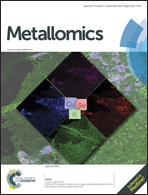ZnT-1 extrudes zinc from mammalian cells functioning as a Zn2+/H+ exchanger
Abstract
ZnT-1 is a Cation Diffusion Facilitator (CDF) family protein, and is present throughout the phylogenetic tree from bacteria to humans. Since its original cloning in 1995, ZnT-1 has been considered to be the major Zn2+ extruding transporter, based on its ability to protect cells against zinc toxicity. However, experimental evidence for ZnT-1 induced Zn2+ extrusion was not convincing. In the present study, based on the 3D crystal structure of the ZnT-1 homologue, YiiP, that predicts a homodimer that utilizes the H+ electrochemical gradient to facilitate Zn2+ efflux, we demonstrate ZnT-1 dependent Zn2+ efflux from HEK 293T cells using FluoZin-3 and Fura 2 by single cell microscope based fluorescent imaging. ZnT-1 facilitates zinc efflux in a sodium-independent, pH-driven and calcium-sensitive manner. Moreover, substitution of two amino acids in the putative zinc binding domain of ZnT-1 led to nullification of Zn2+ efflux and rendered the mutated protein incapable of protecting cells against Zn2+ toxicity. Our results demonstrate that ZnT-1 extrudes zinc from mammalian cells by functioning as a Zn2+/H+ exchanger.


 Please wait while we load your content...
Please wait while we load your content...